Cuttings are one of the most effective ways of cultivating garden chrysanthemums. The main advantage of the method is that in this way it is possible to obtain planting material even from rare spherical, large flowers taken from a bouquet. Varietal traits persist in 100% of cases, which cannot be said about sowing seeds. Learn how to properly propagate garden or bouquet chrysanthemums with cuttings at home, how to pick and cut a flower.
Breeding methods
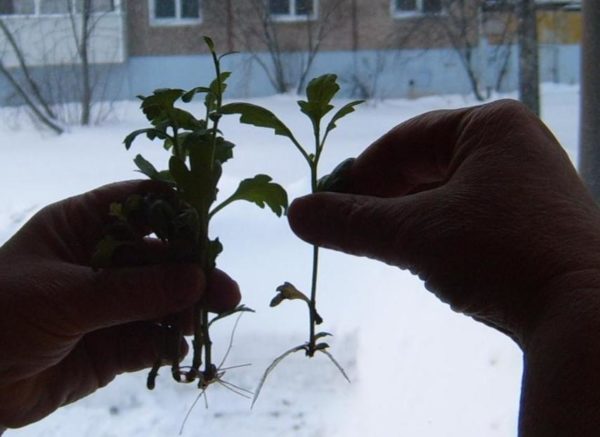 All varieties of the flower are propagated in several ways: by seeds, dividing the bush, layering and cuttings. All options are quite simple, knowing several nuances, even someone who has never encountered growing this flower will cope with them. Amateur gardeners, for certain reasons, prefer the vegetative propagation of chrysanthemums to understand why, we will analyze each method.
All varieties of the flower are propagated in several ways: by seeds, dividing the bush, layering and cuttings. All options are quite simple, knowing several nuances, even someone who has never encountered growing this flower will cope with them. Amateur gardeners, for certain reasons, prefer the vegetative propagation of chrysanthemums to understand why, we will analyze each method.
Seed propagation
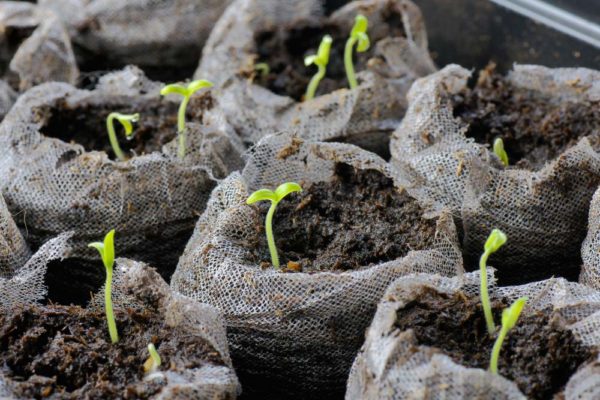 If you want to grow chrysanthemums from seeds collected personally, be prepared for the fact that the plant most likely does not show varietal signs of the parent plant. Seeds purchased from a trusted company will produce varietal offspring, however, some grains may not hatch. You should not buy seeds from open containers in natural markets. How to sow seeds in open ground:
If you want to grow chrysanthemums from seeds collected personally, be prepared for the fact that the plant most likely does not show varietal signs of the parent plant. Seeds purchased from a trusted company will produce varietal offspring, however, some grains may not hatch. You should not buy seeds from open containers in natural markets. How to sow seeds in open ground:
- conduct a shallow digging of the area allocated for chrysanthemums;
- dig small holes (up to 5 cm deep) at a distance of 30 cm from each other;
- pour each hole with warm water and put 3-5 seeds in it;
- sprinkle the seeds with earth and make a small greenhouse over the crops. You can insert several pegs around the perimeter and pull on transparent polyethylene;
- as soon as the first shoots appear, remove the shelter;
- periodically loosen the soil and remove weeds;
- 10 days after hatching seeds, carry out the first top dressing, flower growers use universal fertilizers like Rainbow;
- when the seedlings grow to 8–9 cm in each well, leave 1 or 2 of the strongest sprouts, transplant the rest into another place or share planting material with neighbors.
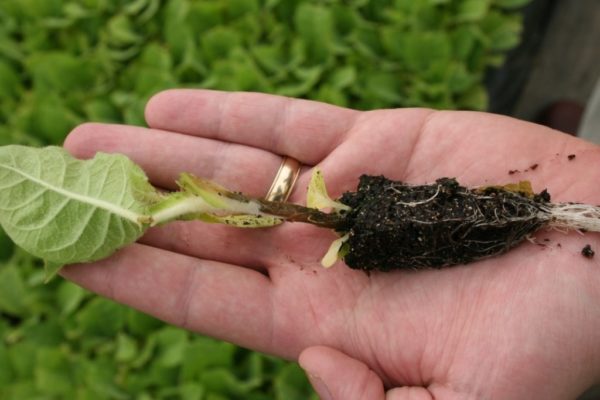 Propagation by seeds is desirable only for small-flowered and annual varieties of chrysanthemums. With early spring sowing in open ground, the bushes will bloom no earlier than mid-autumn, so that buds opened in the summer should be planted through seedlings. The procedure is carried out from mid-February to the first of March. How to germinate chrysanthemum seeds at home:
Propagation by seeds is desirable only for small-flowered and annual varieties of chrysanthemums. With early spring sowing in open ground, the bushes will bloom no earlier than mid-autumn, so that buds opened in the summer should be planted through seedlings. The procedure is carried out from mid-February to the first of March. How to germinate chrysanthemum seeds at home:
- at the bottom of a wide, shallow container, lay a layer of drainage, pour special soil mixture for chrysanthemums into the container;
- spread the seeds on the surface of the soil in any order, but do not overdo it with the number of seeds. If the varieties are annuals, sprinkle them a little on the ground, and if they are perennial, gently push them into the soil;
- spray crops with warm water from a spray bottle, cover the container with polyethylene or glass. Periodically remove the cover for ventilation;
- the first shoots appear in about 10 days, transfer the containers to the lightest window sill and gradually begin to harden the seedlings. First open the window for an hour, gradually increase the time;
- thin out the sprouts at the stage of formation of 3 or 4 leaves. Before planting in open ground, seedlings are abundantly poured with water.
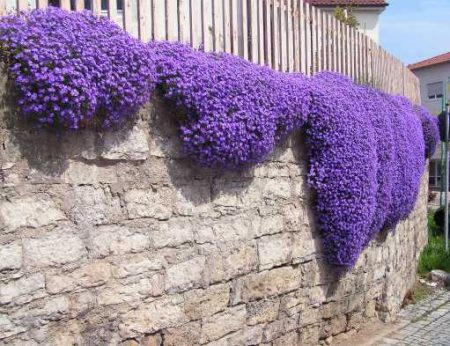 You may be interested in:
You may be interested in:Watering at all stages of seedling development should be carried out regularly, but in moderation. Do not allow waterlogging and drying out of the soil, use only warm, settled water. The temperature in the room with seedlings before hardening should be about + 22–26 degrees. To speed up the process of rooting chrysanthemums after a dive, feeding with Zircon will help. When using fertilizer, the temperature in the room is lowered to + 15–19 degrees. Transplanting flower seedlings to a permanent place is carried out after the last spring frosts.
Reproduction by dividing the bush
It is recommended to plant chrysanthemum growing in one place for more than 3 years. Carefully dig up the whole bush, it is important not to damage the root. Cut the old lignified shoots with a sharp garden knife or secateurs, separate the young branches from the uterine bush along with the roots. If there are long branches on the stems, it is better to carefully cut them. Plant each plot at a distance of 30–35 cm from each other. The procedure is carried out in late spring or in the second half of August.
Propagation by layering
The method is suitable for indoor, as well as for winter-hardy garden varieties of chrysanthemum. Dig a small, oblong hole near the mother plant, the width and depth of the hole should correspond to the size of the bush. Gently bend the stems of the flower and fix with pegs or brackets at the bottom of the prepared pit, cover it with a layer (about 25 cm) of earth, leave the bush in this form for the winter.
In the spring, after awakening, plants from the buds will hatch new, already rooted shoots. When the return frosts have passed, dig up the uterine bush and separate each stem along with the root, transplant to a new place. Do not throw away cuttings with a poorly developed root system, transplant them, like the rest, with proper care they will quickly catch up with stronger shoots in growth.
Propagation by cuttings
The rarest and most valuable varieties are best propagated by cuttings. The Korean version of the flower when breeding by division can not take root in a new place. Cuttings of this variety root well, retain species characteristics, and quickly adapt after planting. Flowers grown from green, not lignified cuttings, are resistant to low temperatures and diseases, are distinguished by a lush crown and rich flowering.
Gardeners divide seasonal cuttings into 2 types: early and late. The first is prepared in the fall, germination is carried out in the winter (from January to the end of February). Such cuttings root for 30 days. The second cut in April or May, they take root in 7 or 14 days. Experts advise starting harvesting cuttings in late autumn, or at the beginning of winter (in warm regions) when the first frost seizes the soil. Features autumn cuttings chrysanthemum:
- varieties with small flowers take root earlier than large-flowered;
- thick, fleshy shoots take root poorly;
- flowers of the same variety, when rooting early and late cuttings, will bloom at the same time;
- the cuttings period strongly affects only the habit of the bush, higher shoots grow from the early cuttings.
Some gardeners cut flower cuttings in the first half of autumn, when the bushes are just starting to bloom. This method can be recommended solely as an experiment, because not all varieties and hybrids of a flower are ready for propagation at this point. Bushes grown from cuttings can bloom already in spring or autumn, in rare cases the next year after planting in open ground, much depends on the variety and conditions of germination.
When and how to cuttings
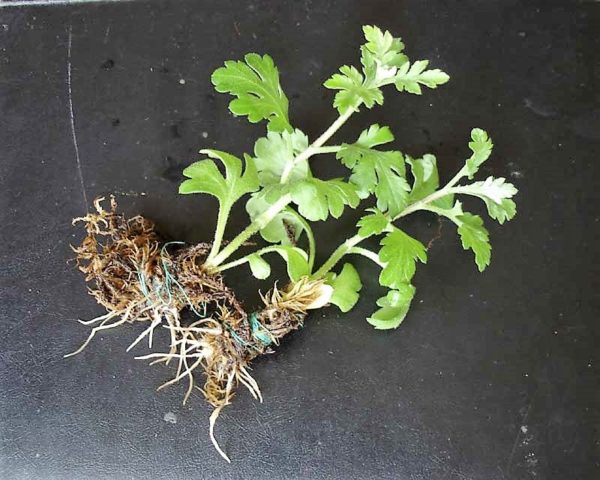 One way of grafting involves the advance preparation of the uterine bush, from which in spring it will be possible to obtain planting material. Varieties with large buds give from 8 to 15 cuttings, and bushes of small-flowered chrysanthemum - 20 or 30. The second option is to prune multiple non-lignified stems from late spring to early fall.
One way of grafting involves the advance preparation of the uterine bush, from which in spring it will be possible to obtain planting material. Varieties with large buds give from 8 to 15 cuttings, and bushes of small-flowered chrysanthemum - 20 or 30. The second option is to prune multiple non-lignified stems from late spring to early fall.
Preparation and storage of the uterine bush
In late autumn (before the onset of stable frosts) cut off all the stems from the selected uterine bush, leave stumps about 5 cm. 10-15 days after the haircut, dig out the bush and, together with a lump of earth, put it in a container of suitable size. Sprinkle bare roots, as well as possible voids, with soil or sand. Transfer the container to a dark, cool room.
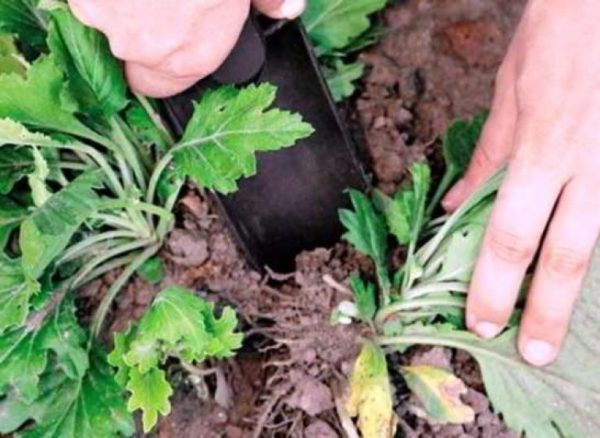
If you transfer the mother liquor to a greenhouse or any other warm room, the first stems will appear in a couple of weeks. If you want to keep the mother liquor until spring, transfer it to the basement or cellar; in a city apartment, any dark place is suitable where the temperature does not rise above +7 degrees. If the temperature is not observed, the kidneys will hatch before the due date.
If the chrysanthemum bush is stored in a moist basement, frequent watering is not necessary. Moderate moisture is permissible only when the earth dries, overfilling will lead to decay of the roots. To start the cuttings in March, the mother liquor is transferred to a warm place in mid-February, watered abundantly, young shoots will hatch after 5-10 days. How to cut and root cuttings:
- when the shoots grow by 8–10 cm, cut them so that there are stumps with two pairs of leaves on the mother liquor. Thus, there will be a basis for the appearance of new stems;
- small cuttings are best left on the bush, they are prone to decay, choose the strongest specimens;
- in cut stems, 2 lower leaves are cut (buds are left);
- cuttings one at a time, in pairs or 3 are planted in separate containers with moistened soil to a depth of 1, 5 to 1, 8 cm;
- in the case when a wide container is selected for planting, the cuttings are placed at a distance of 5 cm from each other.
 You may be interested in:
You may be interested in:If desired, the tip of the shoots can be dipped in Kornevin, but the practice of those who have been engaged in the propagation of chrysanthemums for a long time shows that they root perfectly without additional stimulation. In the autumn cuttings, the shoots need not be cut off from the mother liquor, but carefully separated with the roots, this procedure will guarantee 100% survival of the cuttings.
To prevent the cuttings from drying out, it is necessary to create greenhouse conditions for them. Cover the small pots with transparent plastic cups, cover the bulk container with polyethylene so that the leaves and stems do not touch the covering material. The rooting process can take from 2 to 3 weeks, the kidneys wake up already 3-4 days after planting the cuttings.
Cuttings of flowering chrysanthemums
The procedure can be carried out throughout the growing season, the process is very similar to the cultivation of roses, hydrangeas and other garden flowers.The easiest option is to cut any branch and dig it in the garden, however, such experiments do not always end successfully. We suggest that you familiarize yourself with step-by-step instructions for propagating chrysanthemum by grafting flowering shoots in autumn:
- cut the stems into cuttings 11-16 cm in length, leave those that were closer to the root;
- cut 2 bottom sheets;
- put the received stems in a jar or a glass from transparent glass, pour the settled water (fill up no more than 3 cm of the container);
- add a small amount of a root stimulating preparation to the water - Kornevin, Ribav E, Heteroaxin, Kornerost or any other;
- put the cuttings on the windowsill, a little shade from direct sunlight.
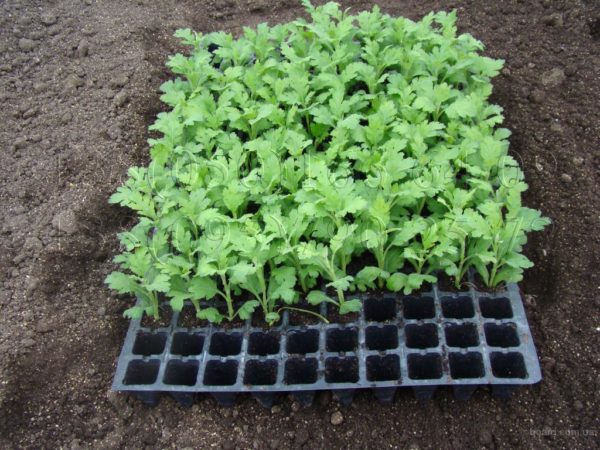 Cuttings will give roots in 30–40 days, while young shoots will begin to grow. It is undesirable to leave them in the water, part of the planting material may die before spring, and only a few stems will acquire powerful roots. It is better to transplant the cuttings in a separate container with soil. Using too thin shoots, as well as opaque containers, will cause the rooting process to take much longer.
Cuttings will give roots in 30–40 days, while young shoots will begin to grow. It is undesirable to leave them in the water, part of the planting material may die before spring, and only a few stems will acquire powerful roots. It is better to transplant the cuttings in a separate container with soil. Using too thin shoots, as well as opaque containers, will cause the rooting process to take much longer.
Transplanted cuttings with plastic cups or plastic bags, periodically moisten the soil. You can remove a kind of greenhouse when the stems are completely rooted in the ground and set into growth. As soon as the street temperature is above +5 degrees, you can begin to temper the seedlings, take them out to the balcony or open the window first for 15 minutes, gradually increase the time.
Propagation of bouquet chrysanthemums
The flower is usually cut in October-November, but is it possible to carry out the procedure at any other time of the year if you have been presented with a bouquet of chic chrysanthemums of a rare, incredibly beautiful variety? It is possible, because cuttings from bouquet flowers not only take root well, but also repeat varietal characters. Of course, you can search your favorite variety in the catalogs, order seeds or seedlings. The search will take time and financial costs, but why, if planting material is already at hand.
How to choose a flower and what to do with it
If the bouquet has stems with small processes, use them first. Cuttings from such shoots take root faster and grow well. In the case when there are no such flowers, take any, but prepare as many cuttings as possible, this will increase the likelihood of receiving planting material. It is not necessary to cut fresh stems, on the contrary, it is better to wait until the flowers begin to wither. You can not take shoots with obvious signs of disease, there is a risk that they will not take root, and indoor plants can pick up the ailment.All inflorescences, as well as the bottom of the stem (about 4 cm), need to be cut. From the remaining stem, remove all leaves and side branches, cut not directly at the stem, leave small stumps. Put the shank in stagnant or boiled water, add a little root stimulant and an activated carbon pill, it will kill microorganisms that provoke the development of various putrefactive processes.
The roots will hatch after about 3-4 weeks, if they did not appear, and the stalk began to rot, cut the bottom of the stem to a healthy tissue, rinse the glass thoroughly, replace the water and add activated charcoal again. As soon as the roots appear, the chrysanthemum should be immediately transplanted into a pot with soil. Do not worry if the stem begins to dry out, this is not a sign of spoilage.
Preparation of containers and soil
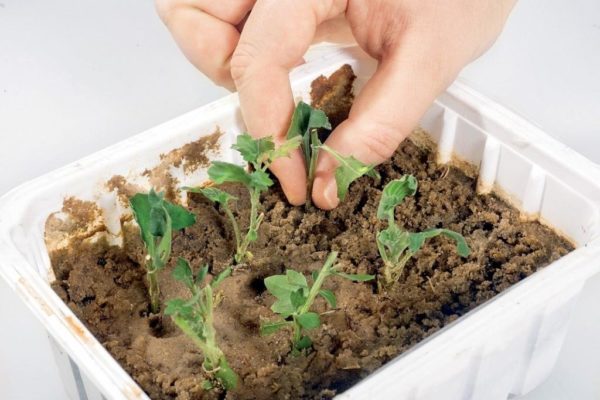 For only rooted cuttings, small pots should be chosen, they may not be deep, but necessarily wide.In this container, the root of the chrysanthemum will occupy a new area gradually, there will be no accumulation of excess moisture in the unaffected areas of the soil, which means that the risk of decay or pests will be minimized. It is necessary to transplant a flower into a large pot when it grows well.
For only rooted cuttings, small pots should be chosen, they may not be deep, but necessarily wide.In this container, the root of the chrysanthemum will occupy a new area gradually, there will be no accumulation of excess moisture in the unaffected areas of the soil, which means that the risk of decay or pests will be minimized. It is necessary to transplant a flower into a large pot when it grows well.
Chrysanthemums prefer loose, nutritious soil, poor, dense or heavy land does not suit them. If you do not have the opportunity to purchase special soil for chrysanthemums, prepare it yourself. Combine purchased universal soil for indoor, garden, and garden crops with perlite, sand, and coconut fiber. Adjust the amount of ingredients at your discretion, you need to get a light and loose mixture.
Planting and caring for rooted chrysanthemum
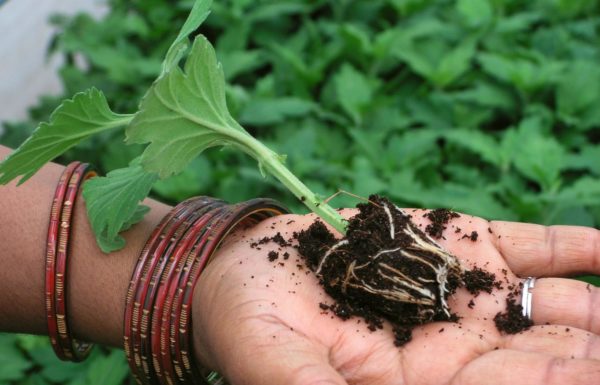 Plant the cuttings very carefully so as not to damage the roots. Pour the soil into the prepared container up to half the volume, moisten a little, place a twig in the middle and gradually cover it with earth. Squeeze the soil lightly and water again with a little water. At first it’s better not to touch the chrysanthemum, cover the stalk with a jar or polyethylene, periodically moisten the ground.
Plant the cuttings very carefully so as not to damage the roots. Pour the soil into the prepared container up to half the volume, moisten a little, place a twig in the middle and gradually cover it with earth. Squeeze the soil lightly and water again with a little water. At first it’s better not to touch the chrysanthemum, cover the stalk with a jar or polyethylene, periodically moisten the ground.
After a month, the seedlings can be fed with nitrogen fertilizers (a tablespoon of dry raw materials per 10 liters of water), they activate growth. The youngest bush needs to be allocated the lightest window sill, in the spring a sapling should be shaded from sunshine. When the stem is rooted and actively grows, pinch the top a little, the plant will shoot side shoots, after 2 months, re-trim. At first, the chrysanthemum needs light even in winter, after planting in open ground, the flower adapts and begins to move to the dormant stage.
Reviews
Kristina
I have never used root formation stimulants for cuttings, the roots grow already, even in capricious varieties of chrysanthemums. I take the water defended or thawed, sometimes rain. Cut old, degenerate bushes, offspring repeated varietal characters, it turns out that you can even save a lost flower. Acquaintances from the northern regions (where winters are usually snowless, chrysanthemums freeze out) save the flowers by harvesting the uterine bush, followed by cuttings.
Daria
When I propagated a spherical chrysanthemum, after rooting and transplanting into a container, buds formed on the cuttings, before planting in a permanent place, about a month remained. I thought for a long time what to do with them, as a result I transferred part of the bushes to the greenhouse, I left the rest at home and cut off the inflorescences. Those that were in the apartment became lush and large, and the blossoming ones noticeably weakened, but after landing in the open ground they quickly caught up with other bushes.
Reproduction of chrysanthemum by cuttings in the fall will not take much effort, even a beginner grower will cope with this method of breeding. Carefully read our recommendations and feel free to get down to business. If you correctly organize a flower bed with different varieties of chrysanthemum, you can create an island that blooms luxuriantly from spring to late autumn, until the earth is grabbed by severe frost. How can you deny yourself such a pleasure!




 Sow in the ground, without seedlings: 10 beautiful and unpretentious flowers
Sow in the ground, without seedlings: 10 beautiful and unpretentious flowers Platicodon planting and outdoor care
Platicodon planting and outdoor care Hosta - planting and care in the open ground in the Urals
Hosta - planting and care in the open ground in the Urals Oleander - care and growing at home
Oleander - care and growing at home